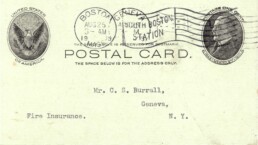King Gillette clearly had a particular plan in mind when he invented the safety razor and accompanying blades and patented them.
This is what he said in his patent application:
“I am able to produce and sell my blades so cheaply that the user may buy them in quantities and throw them away when dull without making the expense thus incurred as great as that of keeping the prior blades sharp, and, moreover, will always have the cutting edge of his razor-blade in the same perfect condition as that of a new blade.”.
SPECIFICATION forming part of Letters Patent No. 775,184, dated November 15, 1904
Gillette is said to be inspired by by one of his employers, William Painter, who made his fortune inventing the disposable bottle cap. Painter advised Gillette to invent another disposable item that would create a steady stream of return customers. In 1895, Gillette worked out the idea for a razor blade that could be fit into a holder and replaced when dulled, thereby insuring a sharp blade for every shave – and that steady stream of return.

Gillette’s idea was, however, quite revolutionary.
After their introduction in 1680, steel edged straight or ‘cut-throat’ razors became the principal method of shaving for more than two hundred years. The associated skills of stropping and honing being essential for every man who didn’t want a beard.
The first of the ‘safety razors’ were essentially short pieces of a straight razor clamped to a holder. The blade had to be stropped before each shave and after a time needed to be honed as well. This early ‘single-edge’ safety razors essentially used a wedge with that hones edge.
In the early days after the release of King Gillette’s revolutionary double edged safety razor it was not only possible to buy brand new blades but also to exchange used blades for new ones. From the card shown above it seems that two returned blades entitled the user to one new blade.
It is thought that, at least in part, this was an attempt to help buyers to get used to the idea of not stropping and honing blades to use them again. You could at least return blades if you wanted to, remembering that the disposable society of the late 1900s was still a long way off.
The approach recommended by William Painter that was said to have inspired King Gillette is also, of course, that taken in many, many products today. Printers with ‘starter’ cartridges of ink being the ultimate example in many peoples mind.
Clearly though, at least in the early years, Gillette himself was not a purist in this approach.

This postal card is dated 24 August 1905 and postmarked the following morning in Boston, Massachusetts, the original ‘home’ of the Gillette Safety Razor Company. It seems to have been received the same day in Geneva, upstate New York according to the second postmark.

The recipient of this postal card, and separately the 1/2 dozen new razor blades, was one “Mr C. S. Burrall Fire Insurance.”
It seems that this was almost certainly, Charles S Burrall (1857 – 1930) with the insurance business that bears his name, C.S. Burrall & Son, Inc., still active today.
The history of this company suggests that not too many years prior to this card being sent it had a monopoly in insuring cars in the town, ‘Every car in Geneva that had insurance in 1897 was insured by us’. I don’t know about you, but I wonder how many that was!
Like all razors or associated items, this postal card has a story. I’m glad that for at least some of the items in the collection I’ve been able to track down these stories and share them.
Postscript:
I’ve been in touch with Tom Burrall, the great grandson of Charles Stacey Burrall.
He indicates that ‘The first auto insurance policy in the world was issued by The Travelers Insurance Company in 1897. In 1897, our agency was the only agency representing Travelers in the area so, it is true, we insured every car in Geneva that had insurance in 1897.’
